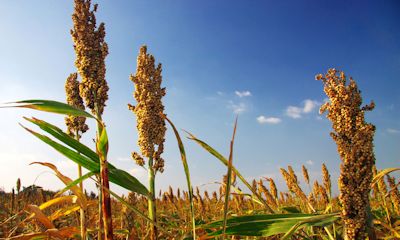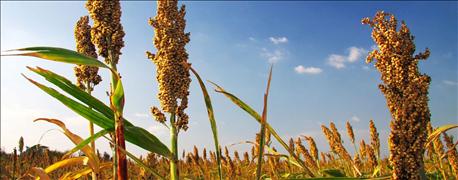
Sorghum saw a surge in acres last year – an increase of about 22.4% nationally, largely driven by the market in China. While most of those acres are in the traditional parts of the Sorghum Belt on the High Plains, there has been an increase in acres throughout the Delta Region, especially in Arkansas.
At the 2016 Sorghum Symposium in Grand Island in January, Jesse McCurry, National Sorghum Producers regional director in Colwich, Kansas, noted there is potential to expand acres further, especially in states like Nebraska. "We feel like there's enough demand and a business case to be made for us to be a year-over-year ten million acre type industry," McCurry says.

MORE ACRES TO MEET DEMAND: Meeting rising international and domestic demand means growing sorghum on more acres. Recently, with sorghum priced close to and exceeding corn due to demand from China, it's seen more interest among growers in Nebraska. "Sorghum can be a high-yield crop if you treat it like a high-yield crop," says Mike Baker. "With the right management it can be very profitable in a tight budgeted crop year."
The Sorghum Checkoff is focusing on reaching international and domestic markets through its "Sorghum: The Smart Choice" campaign.
And while there is concern of export demand backing off, McCurry says China remains a big market for sorghum. "China is still buying sorghum. It's amazing how many places I go and they say, 'When is China going to get back in the market?' China has been in the market and China is in the market," he says. "China is a major customer of all commodities and we believe it will continue to purchase sorghum."
Driving sorghum demand
A big part of China's interest in sorghum is in livestock feed and meeting the protein needs of a growing population, notes Robert Goodband, professor of animal science at Kansas State University, who met with stakeholders in China last year to discuss the feed value of sorghum.
"Buyers commented that sorghum really helps on pork quality from a fat firmness standpoint. Pigs that are fed sorghum-based diets are going to have a lot firmer back fat and belly fat than those fed corn-based diets," Goodband says. "That's because corn has more unsaturated fat in its oil, and that gives an advantage to sorghum to produce pigs with firmer fat."
Sorghum is also seeing an increase in domestic demand, McCurry adds. Recently, California ethanol plants have shown interest in Midwest sorghum. According to a 2014 report from the Sorghum Checkoff, California represents a more than 80 million bushel annual opportunity for the sorghum industry, with three ethanol producers operating four plants. In 2014, each California ethanol producer received a $3 million grant from the California Energy Commission to work toward facilitating sorghum use.
Obstacles to overcome
Meeting this rising demand means growing sorghum on more acres. Recently, with sorghum priced close to and exceeding corn due to demand from China, it's seen more interest among growers in Nebraska.
But there are some obstacles to overcome. In Nebraska, market access can be a challenge, notes Mike Baker, who has grown sorghum on his farm near Trenton for 14 years. "The hard part is finding people willing to market it. On the other hand, it's hard to dedicate enough elevator space to sorghum if there aren't a lot of bushels coming in," Baker says. "In my situation where I'm storing it on-farm, I can find the market I need, and it's priced about the same as corn."
Perception is another matter – that is, getting past the idea that sorghum isn't a high-yielding crop, and treating and managing it like a first rate crop. "Sorghum can be a high-yield crop if you treat it like a high-yield crop," Baker says. "With the right management it can be very profitable in a tight budgeted crop year."
Read more about the domestic and international demand for sorghum in an upcoming print issue of Nebraska Farmer.
About the Author(s)
You May Also Like






